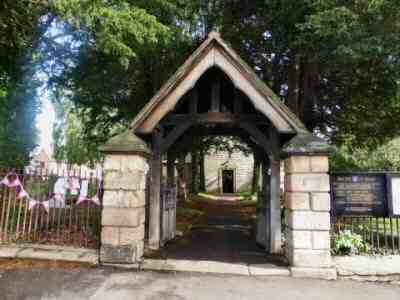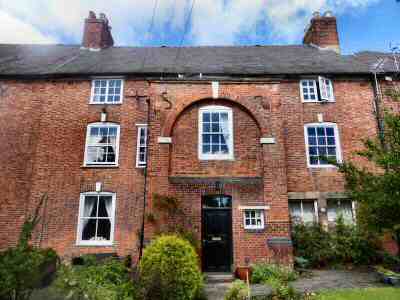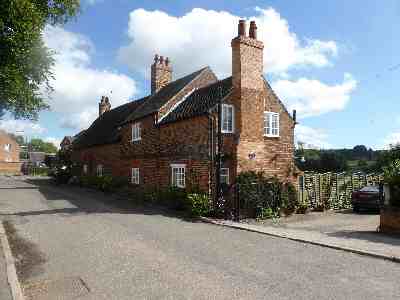OCKBROOK
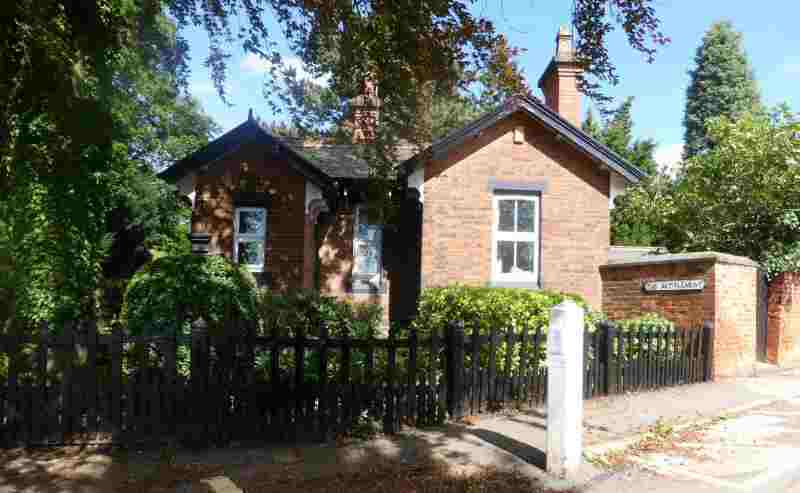
INFORMATION
Where is it? – Ockbrook is situated between the A52 and A6005, one mile to the east of Spondon (SK423360).
What to do? – Visit the Moravian Settlement with its attractive red-brick Georgian buildings. In recent years the Moravians have held special open days during the September Heritage Weekend. These have provided an excellent opportunity to find out more about the old settlement; – Walk around this large village and be sure to take a look at All Saints’ Church. Take a walk to West Park Meadow Local Nature Reserve in Spondon. It is managed to encourage a variety of wildlife. A pond provides a haven for aquatic life and wildfowl.
Where to eat? – The Royal Oak (Tel 01332 662378) is a busy, traditional pub with a non-smoking lounge, snug and games room. It is the oldest licensed public house in the village dating from the early 1700s. There is a separate dining area and outside courtyard seating. Please check the opening details with the venue. – The Bottle Kiln Cafe (Tel 0115 9329442) at West Hallam is a great place to visit. Apart from the cafe it also includes an art gallery, craft and gift shops and a beautiful Japanese Garden. It is on the A609 between Smalley and Ilkeston.
Other places to visit – Visit Elvaston Castle Country Park, (Tel 01332 571342) which was the first Country Park to be opened in Britain. Set on 200 acres of parkland with an ornamental lake, extensive gardens, stony grottoes, rock archways and many other interesting features. Open daily. – Shardlow is one of the best-preserved inland canal ports in the country. It is a fascinating place to explore, still busy with boats, now used for leisure. It owes its existence to a Derbyshire-born genius, James Brindley. Who could neither read nor write properly, but had a brilliant brain. But despite this, he built the Trent and Mersey Canal and many others

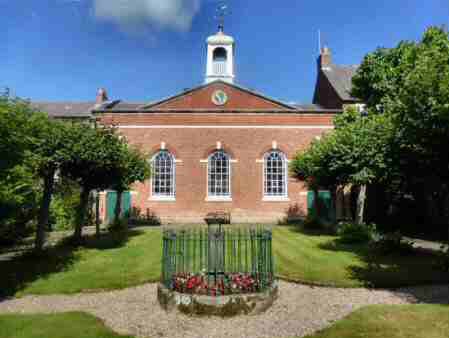
PROFILE
Ockbrook is situated just to the north of the busy A52 dual carriageway. Only a short distance from the outskirts of Derby Despite this Ockbrook has managed to retain much of its charm and at least a reasonable level of quiet. There are two distinct parts to the village. The Old Settlement is where Occa, an Anglo-Saxon, and his people built their homes. In the 6th century on the banks of the brook and from where the village derived its name. Alongside it is the Moravian Settlement, a product of the 18th century. With its delightful terrace of red-brick Georgian buildings and strikingly attractive church approached up a tree-lined path.
Isaac Frearson
In 1739, Isaac Frearson an Ockbrook farmer, when visiting Nottingham stopped in the marketplace. To listen to the Rev Jacob Rogers speak. He was so impressed that he invited him back to preach at Ockbrook. The offer was quickly accepted and Rogers preached a sermon to the people of the village in Frearson’s barn. Although an Anglican, Rev Rogers was very much influenced by the Moravian way of life.
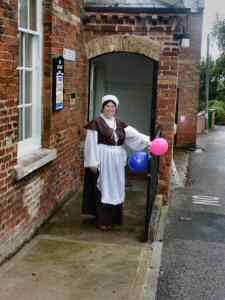
Moravian Church
The Moravian Church was founded in 1457, in Bohemia, and was based on simplicity in life and worship. Persecution followed and became so severe that in 1722 many followers of the religion fled. From Moravia and other states to Saxony near the present-day border with Poland. Where Count Zinzendorf granted them sanctuary. They established the Moravian Church from their base in Saxony and sent out missionaries to America and the West Indies. They also spent time in London and the message gradually spread in this country.
In 1750, a Congregation of the Moravian Church was established in Ockbrook. After overcoming many obstacles, mainly due to local opposition. Some local people did not like the idea of a new church. They did considerable damage to the church during its construction. Despite the unrest, two years later the church was opened on land bought from Isaac Frearson.
During the latter part of the 18th century, Ockbrook was the centre of the Moravian Church in England. The Moravians were hard-working, highly disciplined people with strict rules. They attended to the basic medical needs of the community, built schools and opened a shop as well as administered to the spiritual needs of the community.
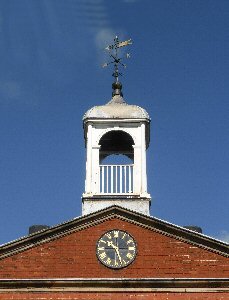
Anniversary Celebrations
The Moravians celebrated their 250th anniversary at the beginning of this century. When any person associated with the church, by request had their name embroidered on a leaf. This formed part of a tree tapestry, which was hung on the wall of the church.
As one would expect with such a disciplined community their buildings are set out in a formalised pattern. The path to the church is known as the ‘Bishop’s Walk.’ It has been created from a collection of flagstones acquired from Dale Abbey. The church clock was made by Whitehurst of Derby and paid for by public subscription. It is hand-wound and still in working order.
The Single Sisters’ House
At the top of The Settlement, the Single Sisters’ House was funded by the production and sale of fine needlework. The Sisters also ran a small day school until 1799, when a Girls’ school was opened in a different building. The school remains today as an Independent Private school (closed in 2021). It faces the Lecture Hall and Sunday school, which was opened in 1831. During the First World War, the building was used as an Auxiliary hospital by the Red Cross and many soldiers came here for recuperation. It is now used by various groups from the local community as well as by the congregation itself.
Across the access road, opposite the Single Sisters’ House, are the so-called ‘Houses on the Hill’. These were the first houses built by the Moravians. The Manse and the Moravian Church are both Grade II listed buildings. The centre of the village is a designated Conservation Area.
Development
The arrival of the Moravians led to a considerable improvement in living standards. As a result, more affluent people moved to Ockbrook. New trades were introduced including silk glove, shoe and straw bonnet manufacture.
Textile manufacture was also very important and framework knitting was carried on in cottages in the village. The Cross Keys fulfilled the joint function of a public house and silk stocking manufacturer. So much so that Queen Victoria’s wedding stockings were made on the premises! The knitters’ window designed to provide the maximum light has recently been replaced. However, during the second half of the 19th century, competition from mechanisation slowly ended the cottage industry.
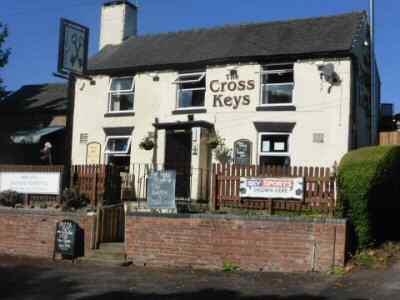
Public Houses
The Royal Oak is the oldest licensed public house in the village and dates back to the early 1700s. A stone slab near the front of the premises covers a well from where water was once drawn to make beer. Behind the Queen’s Head is the local cricket club that has achieved a considerable amount of success in recent years. One local character who certainly enjoyed playing for the club was Whackie Harrison who played for 42 years from 1891. In more recent years, Kevin Dean, the former Derbyshire CCC stalwart has captained the side. Another attractive pub worth a visit to is the White Swan, which is situated near the church.
The Cross Keys, owned by Punch Taverns, was so much in decline a few years ago. That the leaseholder offered the lease for ‘sale’ for nothing. And there were no takers. Eventually along came Ian Darlington and a few years later the pub not only offers drinks but also serves food. To add to the success story the pub made its debut in the Good Beer Guide, for 2016.
The Village
All Saints’ Church became the parish church around 1600, having previously served as a chapelry of Elvaston. The tower was built in the 12th century, and the spire was added later. The Norman font was restored in 1963 and returned to its rightful place. After being thrown out by a previous generation and used in the rectory garden. At the rear of the church stands Church Farm, a delightful timber-framed farmhouse dating back to the 17th century. The building has been substantially restored recently.
The Old Post Office, down the path leading from the Settlement into the main part of the village. Has been converted into a private house. It was once the Moravian Congregation Shop, where the best quality goods at reasonable prices were offered by the brethren. Further up the path, Shopstones Cottages were built as family houses. Visitors to the Settlement usually stayed at the New Inn (now Greenside) which began business in 1792. The extension on the western side was used as a Sunday School and during the First World War as a hospital for servicemen.
